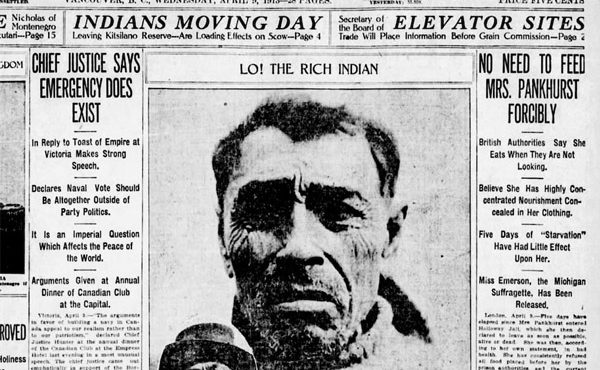
Last night the City of Vancouver announced the winners of the re:THINK HOUSING design competition. This is the second ideas and design competition carried out by the City and focussed on innovative concepts to provide solutions and discussion for the development and supporting structures affordable housing in an increasingly unaffordable city.
Submitted ideas were separated into four categories that the design ideas were expressed and judged in. Building Bold focussed on major projects and redevelopment sites, while Vibrant Neighbourhoods looked at solutions in developing new forms and ideas across the city. These streams were also divided between proposals that utilized private and public land.
The short competition, which drew over 70 entries locally and internationally was decided over 8000 votes from the public and a panel Jury chaired by Al Boniface. The Mayor’s Task Force on Housing Affordability will be developing a more final report that will incorporate the ideas from winners as part of a larger city-wide affordable housing strategy.

[Look below for images, descriptions, and links to the winning submissions.]
JURY SELECTIONS:
The jury chair Al Boniface announced that they had come to 3 winners out of the 4 categories, and that some of these winners did not necessarily apply for the categories they won.

Title: Human Space
Winner: Andrew Neuman
Location: Vancouver, Canada
The design utilizes the spaces between buildings in neighbourhoods to incorporate and create co-housing solutions into existing neighbourhoods. It was noted that this submission was not a quick solution and had some technology issues that would need to be overcome, but that it’s goals and principles were laudable.

Title: Thin Streets: From Asphalt to Affordable Housing
Winners: Christina Demarco, Ted Sebastian, Charles Dobson
Location: Vancouver, Canada

Stream: Building Bold (Public/Private mix)
Title: Bridge Housing
Winner: Ian Ross McDonald
Location: Vancouver, CanadaThe Bridge Housing concept proposes exactly that, developing housing that bridges over existing uses and buildings. The innovative and bold submission looks to preserve existing community fabric by aquiring air rights over neighbouring development and developing a structure that supports housing forms over top of retained buildings.
•••
The more than 8000 votes decided winners by popular decision from the public. Mayor Robertson announced the winners and handed out certificates for the recognized value of their submissions at attempting to stem the tide of housing affordability.


Cargo Park looks at placing shipping containers as with small housing units on the open parking lot north of City Hall. This kind of temporary solution had been presented elsewhere in the competition, but was not as effectively rendered. The proposal also includes food retail and public open space provision included on site.

Stream: Vibrant Neighbourhoods – Public Land (or Public/Private mix)
Title: CoHousing with a Twist
Winners: Joanne Lund & CommitteeLocation: Delta, CanadaThis proposal reminds readers that successful housing models for CoHousing exist and looks at streamlining for the hope that City of Vancouver could showcase ideas so to become a leader in creating innovative and sustainable cohousing developments.

Title: Home Together
Winners: Andrew Martin, Carolyn Shaffer, Sarah Ross and Travis Clyne [Vancouver Association of Collective Housing Enthusiasts]
Location: Vancouver, Canada
The idea of cooperative tenure and collective ownership of housing is a powerful one when looking at affordability in housing. Home together proposes re-inventing co-operative living for the 21st century with Collective Housing. The group proposes city bylaw changes to make development of different kinds of coops easier. Allow higher occupancy for dwellings by changing the definition of “Family” or increasing the number of allowable boarders for a development to allow higher occupancy and shared facilities. They also recommend creating an RC = Collective Dwelling zoning district to purposefully develop cooperative design regulations. Also recommended are government bodies or support for organizations to foster and support the development and operations of coop housing.
•••
There were six honourable mentions selected by the Jury. These projects were selected on the grounds that they had presented ideas and designs with value for the report that effectively tackled the “difficult challenge that is such an important part of the future of the city.”
Stream: Building Bold Public Land (or Public/Private mix)
Title: Community Condos
Winner: Tami Reilly, Canadian Commercial Services Ltd.
Location: North Vancouver, Canada
This project suggested using shipping containers as an apartment housing solution to fit into temporarily vacant sites in the city.
Stream: Vibrant Neighbourhoods – Private Land
Title: Stealth Approach
Winners: D’Arcy Jones Design
Location: Vancouver, Canada
This approach looks at fitting density into low height neighbourhoods by sinking basement suites deeper into lots with their own yards defended below grade. The judges particularly noted the design as providing a high level of livability for the concept.
Stream: Building Bold – Private Land
Title: Courtyard Housing
Winners: Cheryl Wan
Location: Richmond Hill, Canada
This submission presents a double fronting courtyard housing model that increases yield on private lots while still creating open space opportuneties. It also looks at developing mixed unit types.
Stream: Building Bold – Private Land
Title: The Missing Typologies
Winners: Robyn Fenton – ReForma Architecture
Location: Vancouver, Canada
Looks to address the underrepresentation of semi-detached and row house typologies in the city.
Stream: Vibrant Neighbourhoods – Public Land (or Public/Private mix)
Title: Affordable Housing and Heritage Retention
Winner: Sean McEwen, SR McEwen Architect
Location: Vancouver, Canada
This development proposal presents the preservation and regeneration of City-owned housing. The an abandoned expansion of Delamont Park blocks in Kitsilano leaves housing available for redesign and the proposal show a mixed-income affordable housing that is integrated with infill density creating a more whole community oriented block that also faces the lane and access to public spaces.
Stream: Vibrant Neighbourhoods – Public Land (or Public/Private mix)
Title: Integrated Community Building
Winners: Lane Walker, Cherie White – [WestCoast Spirit Builders]
Location: Vancouver, Canada
An Integrated community development model that includes interaction and community skills building that allow low income families and individuals to get support to not only manage life and housing but grow neighbourhood health across the city.
•••
The event at the new Vandusen Gardens main building was a swankier affair with Councilors, contestants, media, designers, and engaged mingling and celebrating around a catered spread. It was a strong celebration of those that want to push the city to achieving goals.
The mayor noted that “we dont want to become a resort city” and that these proposals “help stem the tide”. City manager Penny Ballum assured that the “winners will not sit on the shelf”, but instead be analysed and internalized by City staff for the report. She said that she does “not expect to see the goals met completely in her life [tenure as City Manager] here”, but that this will “guide future government and future staff directions”, “allowing decision makers “to tap into the rich knowledge and potential” that these submissions provided.
Congratulations to the winners and all who submitted and voted.
•••




One comment
There is quite a simple means of increasing the supply of housing: make it more profitable for builders to build upward rather than outward through elimination of height and minimum setback restrictions, require the ground floor(s) of infill to be used for retail and office space and maximum automobile parking of 0, decreasing development charges to 0 for infill and increased for low-density land use and base property taxes on the value of land alone rather than both land and building.